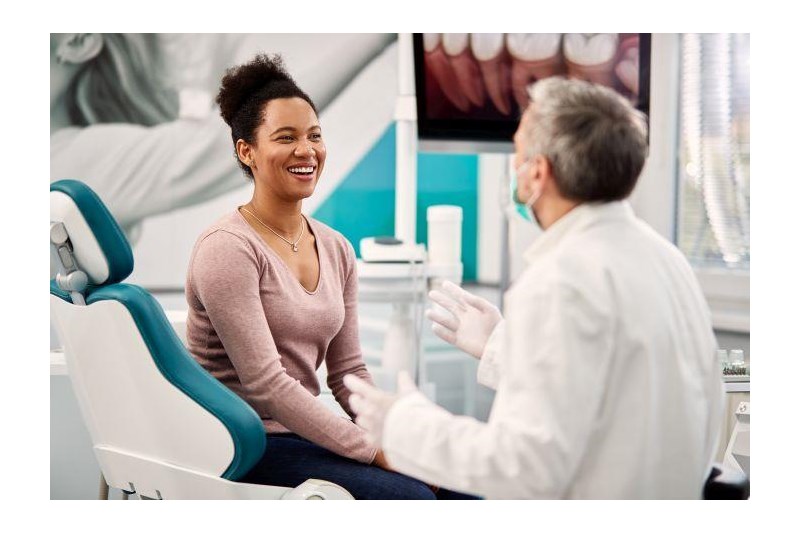Remote orthodontics: communication between clinician and patient is critical
Published: 29/06/2021
Knowing the name of the clinician who provides your orthodontic treatment should be a fundamental right says Asif Chatoo, an orthodontist who founded the first clinic in the UK dedicated to lingual orthodontics. His comments are made following publication of a statement from dental regulator the General Dental Council as well as the 2020 review Dental Complaints Service (DCS) which highlight the worrying growth in "direct-to-consumer" orthodontics.
The GDC’s statement said:
The General Dental Council (GDC) welcomes innovation in dentistry that promotes safe care and improved services for dental patients.
Remote interactions and consultations, including those for healthcare and dentistry, are becoming more widely used and can provide significant benefits for patients, particularly in terms of access and affordability. Patients’ expectations of how they receive their care are also changing, with the benefits afforded by remote consultations resulting in increasing demand for these services. However, it is imperative that any innovation that affects the provision of dental services does not compromise fundamental patient safety measures or public confidence in dental services.
The GDC is aware of an increasing number of organisations offering services remotely, including ‘direct-to-consumer’ orthodontics using clear aligners. These services fall within the legal definition of dentistry so can only be performed by dentists and dental care professionals who are registered with the GDC. All dental professionals must adhere to the GDC’s Standards for the Dental Team. Anybody practising dentistry while not registered with the GDC could be subject to prosecution for illegal practice.
The Standards for the Dental Team apply to all dental professionals in all treatment settings, including interactions provided on a remote platform. These standards provide a framework within which dental professionals take decisions and provide safe and effective care to patients.
There is likely to be a range of interactions between dental professionals and patients which can be provided safely and effectively on a remote platform in full compliance with the Standards for the Dental Team. However, for other aspects of the patient care pathway, a face-to-face interaction or a physical clinical assessment will be necessary to ensure patient safety.
In line with current authoritative clinical guidance, and orthodontic training, clinical judgements about the suitability of a proposed course of orthodontic treatment must be based on a full assessment of the patient’s oral health. At present, there is no effective substitute for a physical, clinical examination as the foundation for that assessment.
Should a dentist rely upon information from another source, for example, information from another dental professional about a clinical examination they have conducted to inform their own clinical judgement, the responsibility for that judgement rests wholly with the prescribing dentist. As in all cases, the treating dentist must make and keep a full patient record, including the reasons for any decision to deviate from established practice and guidance.
As in any other setting, it is the responsibility of the treating dentist to ensure that they communicate directly and effectively with their patients, explain the treatment options available, and obtain valid consent both at the outset and throughout any course of treatment. Direct interaction between patient and practitioner is essential for providing patients the opportunity to ask questions, provide consent, and be satisfied that that the course of treatment proposed is likely to meet their needs and expectations. Patients must know the full name of the dental professional responsible for their treatment and be able to make direct contact with that person.
Registered dental professionals have a professional responsibility to follow the Standards for the Dental Team and provide patient-centred, safe care based on authoritative clinical guidance. Dental professionals also need to ensure that they are appropriately indemnified. Those who do not comply with the Standards for the Dental Team, indemnity requirements and authoritative clinical guidance put patient safety, and their registration, at risk.
The DCS annual report reveals that the majority of complaints by patients in 2020 related to perceived failure of treatment (85 per cent) with most arising from treatment with removable orthodontic appliances. Of concern to Mr Chatoo is that a case study in the report reveals the patient did not know the full name of the clinician who wrote their treatment plan. This meant that they had no-one to turn to with their concerns or questions about their treatment.
The case study described how following treatment the patient complained to the company who provided the aligners because they could see no difference in their teeth. Initially the company would only offer another course of treatment involving a second finance plan. Fortunately, the DCS intervened and the company cancelled the finance agreement with the patient who declined a second course of "remote" orthodontic treatment.
Mr Chatoo said, "Several things about this case study concern me. I am shocked that the initially the company declined to share the name of the clinician who provided the treatment plan. Without the intervention of the DCS, the patient would not have had a refund and their credit rating might have been jeopardised due to the finance agreement not being cancelled. This highlights the risk of an arrangement with an online company as opposed to with an individual clinician or practice."
Mr Chatoo, who has written a blog about remote orthodontics, continued, "I am glad that the GDC and the DCS have highlighted the questions patients need to ask before they order aligners online. For all patients, knowing the name of your clinician should be a right.
“Communication between clinician and patient is critical to the provision of orthodontics and must not be lost in the rush to embrace innovation and remote technology."
Author: N/A

.jpg?width=300&height=200&scale=canvas)










.jpg?width=150&height=100&scale=canvas)
